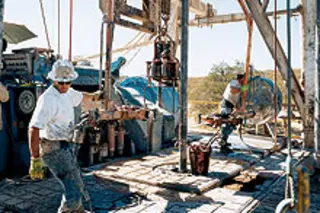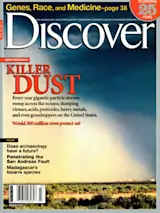The odds against a major earthquake happening on the day I arrive in central California to write about earthquakes are approximately 8,030 to 1.
If only I were a betting man. It hits at 10:15 a.m. on September 28, 2004, as I am biting into a breakfast bar, waiting in a trailer at the San Andreas Fault Observatory at Depth. The project is using an oil-drilling rig to bore deep into the infamous fault, allowing geophysicists to plant instruments at the precise spot where earthquakes begin. At first I think the rig, roughly 100 yards from the trailer, is making the ground vibrate, but soon the trailer’s floor is juking and jiving beyond all reason.
“Oh my God, it’s an earthquake!” shouts geophysicist Naomi Boness, clutching her desk. I appreciate the professional confirmation.
The quake lasts 10 seconds—10 really, really long seconds. It is shaky, rumbly, scary, and bad enough ...















